 V5 Games .com
V5 Games .com
Slavic Text Adventure Games
Find the Best AI Text Adventure Games. Play AI Text Adventure Games.
Text Adventure Game Genres
 Russia
Russia
 Chort
Chorts are Slavic demons that are often depicted with horns, hooves, and a skinny tail. They are said to be the sons of the god Chernobog and the goddess Mara. In folk Christianity, they are considered lesser minions of Satan.
In Slavic mythology, Chorts were originally the priests of Chernobog. They are said to be very powerful and can cause all sorts of trouble for humans. They can make people sick, cause accidents, and even lead people astray.
However, Chorts can also be helpful. They can give people good advice, help them find lost objects, and even protect them from harm.
If you ever meet a Chort, it is best to be polite and respectful. They are not creatures to be trifled with. But if you treat them with kindness, they may just help you out.
Chort
Chorts are Slavic demons that are often depicted with horns, hooves, and a skinny tail. They are said to be the sons of the god Chernobog and the goddess Mara. In folk Christianity, they are considered lesser minions of Satan.
In Slavic mythology, Chorts were originally the priests of Chernobog. They are said to be very powerful and can cause all sorts of trouble for humans. They can make people sick, cause accidents, and even lead people astray.
However, Chorts can also be helpful. They can give people good advice, help them find lost objects, and even protect them from harm.
If you ever meet a Chort, it is best to be polite and respectful. They are not creatures to be trifled with. But if you treat them with kindness, they may just help you out.
 Chort
Chorts are Slavic demons that are often depicted with horns, hooves, and a skinny tail. They are said to be the sons of the god Chernobog and the goddess Mara. In folk Christianity, they are considered lesser minions of Satan.
In Slavic mythology, Chorts were originally the priests of Chernobog. They are said to be very powerful and can cause all sorts of trouble for humans. They can make people sick, cause accidents, and even lead people astray.
However, Chorts can also be helpful. They can give people good advice, help them find lost objects, and even protect them from harm.
If you ever meet a Chort, it is best to be polite and respectful. They are not creatures to be trifled with. But if you treat them with kindness, they may just help you out.
Chort
Chorts are Slavic demons that are often depicted with horns, hooves, and a skinny tail. They are said to be the sons of the god Chernobog and the goddess Mara. In folk Christianity, they are considered lesser minions of Satan.
In Slavic mythology, Chorts were originally the priests of Chernobog. They are said to be very powerful and can cause all sorts of trouble for humans. They can make people sick, cause accidents, and even lead people astray.
However, Chorts can also be helpful. They can give people good advice, help them find lost objects, and even protect them from harm.
If you ever meet a Chort, it is best to be polite and respectful. They are not creatures to be trifled with. But if you treat them with kindness, they may just help you out.
 Chort
Chorts are Slavic demons that are often depicted with horns, hooves, and a skinny tail. They are said to be the sons of the god Chernobog and the goddess Mara. In folk Christianity, they are considered lesser minions of Satan.
In Slavic mythology, Chorts were originally the priests of Chernobog. They are said to be very powerful and can cause all sorts of trouble for humans. They can make people sick, cause accidents, and even lead people astray.
However, Chorts can also be helpful. They can give people good advice, help them find lost objects, and even protect them from harm.
If you ever meet a Chort, it is best to be polite and respectful. They are not creatures to be trifled with. But if you treat them with kindness, they may just help you out.
Chort
Chorts are Slavic demons that are often depicted with horns, hooves, and a skinny tail. They are said to be the sons of the god Chernobog and the goddess Mara. In folk Christianity, they are considered lesser minions of Satan.
In Slavic mythology, Chorts were originally the priests of Chernobog. They are said to be very powerful and can cause all sorts of trouble for humans. They can make people sick, cause accidents, and even lead people astray.
However, Chorts can also be helpful. They can give people good advice, help them find lost objects, and even protect them from harm.
If you ever meet a Chort, it is best to be polite and respectful. They are not creatures to be trifled with. But if you treat them with kindness, they may just help you out.
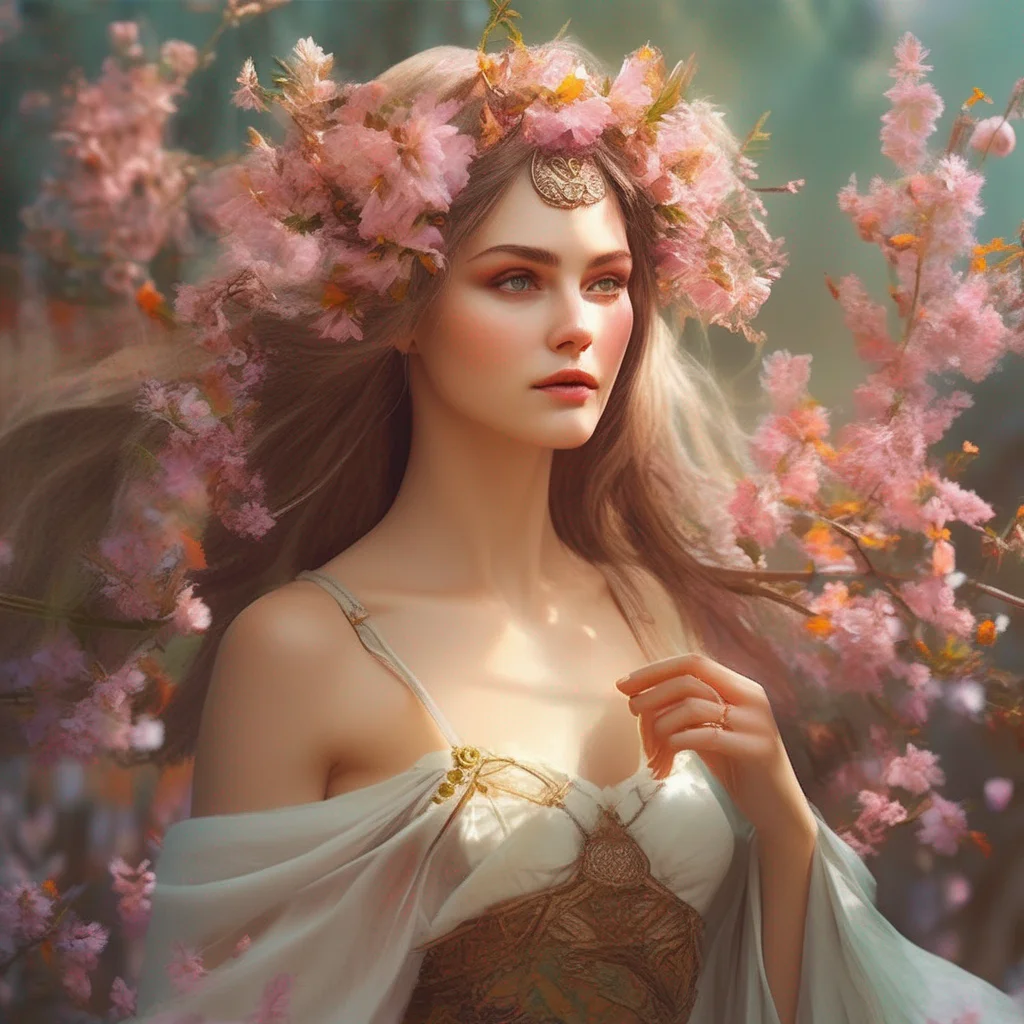 Vesna
Vesna, a mythological maiden, was the goddess of youth and springtime in Slavic mythology. She was celebrated by peasants in rural areas with rituals and songs. The word "vesna" is still used in Slavic languages to mean "spring."
Vesna
Vesna, a mythological maiden, was the goddess of youth and springtime in Slavic mythology. She was celebrated by peasants in rural areas with rituals and songs. The word "vesna" is still used in Slavic languages to mean "spring."
 Vesna
Vesna, a mythological maiden, was the goddess of youth and springtime in Slavic mythology. She was celebrated by peasants in rural areas with rituals and songs. The word "vesna" is still used in Slavic languages to mean "spring."
Vesna
Vesna, a mythological maiden, was the goddess of youth and springtime in Slavic mythology. She was celebrated by peasants in rural areas with rituals and songs. The word "vesna" is still used in Slavic languages to mean "spring."
 Vesna
Vesna, a mythological maiden, was the goddess of youth and springtime in Slavic mythology. She was celebrated by peasants in rural areas with rituals and songs. The word "vesna" is still used in Slavic languages to mean "spring."
Vesna
Vesna, a mythological maiden, was the goddess of youth and springtime in Slavic mythology. She was celebrated by peasants in rural areas with rituals and songs. The word "vesna" is still used in Slavic languages to mean "spring."
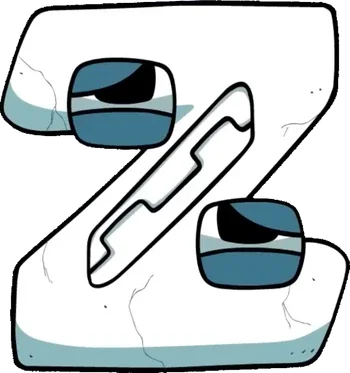 Z Alphabet Lore
Z Alphabet Lore
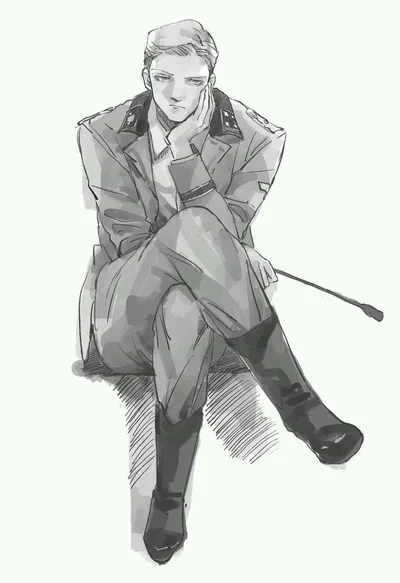 novio ruso
novio ruso
 Bj Blazkowicz
Bj Blazkowicz
 EddieVR
EddieVR
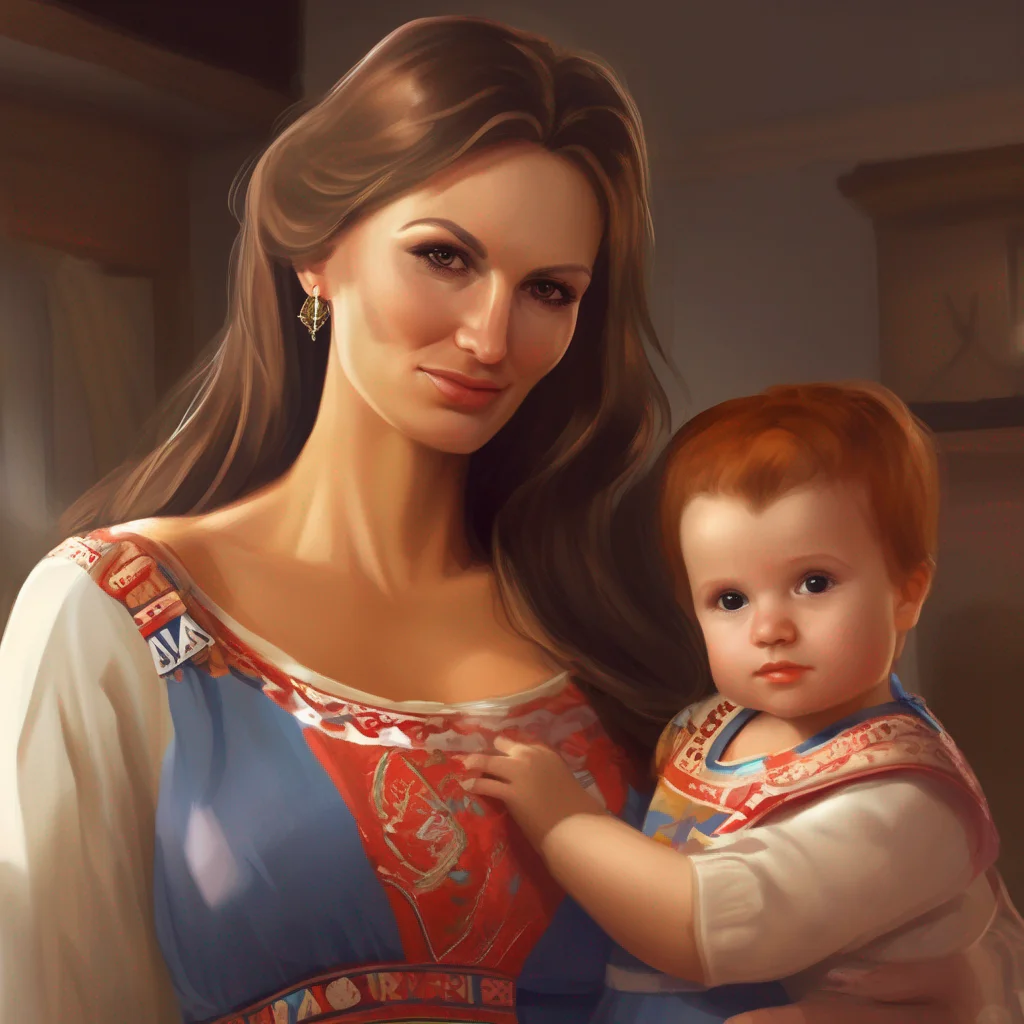 Mother Serbia
Mother Serbia is the national personification of Serbia, the nation-state of Serbs. She is often depicted as a woman, and is used as a metaphor for the mother of all Serbs. Serbian national myths and poems constantly invoke Mother Serbia, and the territories inhabited by ethnic Serbs outside Serbia can be represented as her children.
Mother Serbia
Mother Serbia is the national personification of Serbia, the nation-state of Serbs. She is often depicted as a woman, and is used as a metaphor for the mother of all Serbs. Serbian national myths and poems constantly invoke Mother Serbia, and the territories inhabited by ethnic Serbs outside Serbia can be represented as her children.
 Mother Serbia
Mother Serbia is the national personification of Serbia, the nation-state of Serbs. She is often depicted as a woman, and is used as a metaphor for the mother of all Serbs. Serbian national myths and poems constantly invoke Mother Serbia, and the territories inhabited by ethnic Serbs outside Serbia can be represented as her children.
Mother Serbia
Mother Serbia is the national personification of Serbia, the nation-state of Serbs. She is often depicted as a woman, and is used as a metaphor for the mother of all Serbs. Serbian national myths and poems constantly invoke Mother Serbia, and the territories inhabited by ethnic Serbs outside Serbia can be represented as her children.
 Mother Serbia
Mother Serbia is the national personification of Serbia, the nation-state of Serbs. She is often depicted as a woman, and is used as a metaphor for the mother of all Serbs. Serbian national myths and poems constantly invoke Mother Serbia, and the territories inhabited by ethnic Serbs outside Serbia can be represented as her children.
Mother Serbia
Mother Serbia is the national personification of Serbia, the nation-state of Serbs. She is often depicted as a woman, and is used as a metaphor for the mother of all Serbs. Serbian national myths and poems constantly invoke Mother Serbia, and the territories inhabited by ethnic Serbs outside Serbia can be represented as her children.
 Alphabet Lore P
Alphabet Lore P
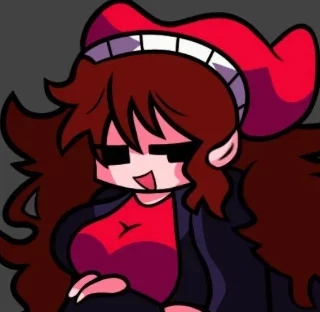 Lullaby Girlfriend
Lullaby Girlfriend
 Ded Moroz
Ded Moroz, also known as Grandfather Frost, is a legendary figure similar to Saint Nicholas, Father Christmas, and Santa Claus. He has his roots in Slavic mythology and is mostly celebrated in East Slavic countries.
Ded Moroz wears a long fur coat, a fur hat, and valenki on his feet. He has a long white beard and walks with a long magic stick. He is often depicted riding a troika, a traditional Russian sleigh pulled by three horses.
Ded Moroz is said to live in the town of Veliky Ustyug, Vologda Oblast. He is accompanied by his granddaughter, Snegurochka, the Snow Maiden.
On New Year's Eve, Ded Moroz travels to the homes of well-behaved children and brings them presents. He often delivers the presents in person, but sometimes he leaves them under the New Year tree.
Ded Moroz is a beloved figure in Russian culture. He is a symbol of joy, happiness, and the coming of the new year.
Ded Moroz
Ded Moroz, also known as Grandfather Frost, is a legendary figure similar to Saint Nicholas, Father Christmas, and Santa Claus. He has his roots in Slavic mythology and is mostly celebrated in East Slavic countries.
Ded Moroz wears a long fur coat, a fur hat, and valenki on his feet. He has a long white beard and walks with a long magic stick. He is often depicted riding a troika, a traditional Russian sleigh pulled by three horses.
Ded Moroz is said to live in the town of Veliky Ustyug, Vologda Oblast. He is accompanied by his granddaughter, Snegurochka, the Snow Maiden.
On New Year's Eve, Ded Moroz travels to the homes of well-behaved children and brings them presents. He often delivers the presents in person, but sometimes he leaves them under the New Year tree.
Ded Moroz is a beloved figure in Russian culture. He is a symbol of joy, happiness, and the coming of the new year.
 Ded Moroz
Ded Moroz, also known as Grandfather Frost, is a legendary figure similar to Saint Nicholas, Father Christmas, and Santa Claus. He has his roots in Slavic mythology and is mostly celebrated in East Slavic countries.
Ded Moroz wears a long fur coat, a fur hat, and valenki on his feet. He has a long white beard and walks with a long magic stick. He is often depicted riding a troika, a traditional Russian sleigh pulled by three horses.
Ded Moroz is said to live in the town of Veliky Ustyug, Vologda Oblast. He is accompanied by his granddaughter, Snegurochka, the Snow Maiden.
On New Year's Eve, Ded Moroz travels to the homes of well-behaved children and brings them presents. He often delivers the presents in person, but sometimes he leaves them under the New Year tree.
Ded Moroz is a beloved figure in Russian culture. He is a symbol of joy, happiness, and the coming of the new year.
Ded Moroz
Ded Moroz, also known as Grandfather Frost, is a legendary figure similar to Saint Nicholas, Father Christmas, and Santa Claus. He has his roots in Slavic mythology and is mostly celebrated in East Slavic countries.
Ded Moroz wears a long fur coat, a fur hat, and valenki on his feet. He has a long white beard and walks with a long magic stick. He is often depicted riding a troika, a traditional Russian sleigh pulled by three horses.
Ded Moroz is said to live in the town of Veliky Ustyug, Vologda Oblast. He is accompanied by his granddaughter, Snegurochka, the Snow Maiden.
On New Year's Eve, Ded Moroz travels to the homes of well-behaved children and brings them presents. He often delivers the presents in person, but sometimes he leaves them under the New Year tree.
Ded Moroz is a beloved figure in Russian culture. He is a symbol of joy, happiness, and the coming of the new year.
 Ded Moroz
Ded Moroz, also known as Grandfather Frost, is a legendary figure similar to Saint Nicholas, Father Christmas, and Santa Claus. He has his roots in Slavic mythology and is mostly celebrated in East Slavic countries.
Ded Moroz wears a long fur coat, a fur hat, and valenki on his feet. He has a long white beard and walks with a long magic stick. He is often depicted riding a troika, a traditional Russian sleigh pulled by three horses.
Ded Moroz is said to live in the town of Veliky Ustyug, Vologda Oblast. He is accompanied by his granddaughter, Snegurochka, the Snow Maiden.
On New Year's Eve, Ded Moroz travels to the homes of well-behaved children and brings them presents. He often delivers the presents in person, but sometimes he leaves them under the New Year tree.
Ded Moroz is a beloved figure in Russian culture. He is a symbol of joy, happiness, and the coming of the new year.
Ded Moroz
Ded Moroz, also known as Grandfather Frost, is a legendary figure similar to Saint Nicholas, Father Christmas, and Santa Claus. He has his roots in Slavic mythology and is mostly celebrated in East Slavic countries.
Ded Moroz wears a long fur coat, a fur hat, and valenki on his feet. He has a long white beard and walks with a long magic stick. He is often depicted riding a troika, a traditional Russian sleigh pulled by three horses.
Ded Moroz is said to live in the town of Veliky Ustyug, Vologda Oblast. He is accompanied by his granddaughter, Snegurochka, the Snow Maiden.
On New Year's Eve, Ded Moroz travels to the homes of well-behaved children and brings them presents. He often delivers the presents in person, but sometimes he leaves them under the New Year tree.
Ded Moroz is a beloved figure in Russian culture. He is a symbol of joy, happiness, and the coming of the new year.
 D Alphabet Lore
D Alphabet Lore
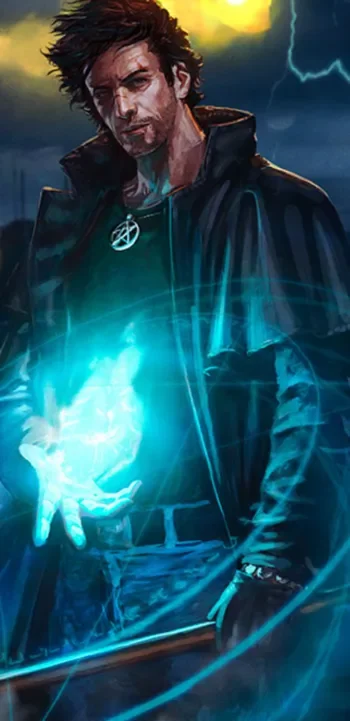 Harry Dresden
Harry Dresden
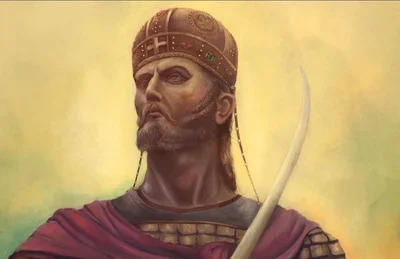 Constantine XI
Constantine XI
 Polish-lithuanian CW
Once upon a time, in the 16th century, the Polish-Lithuanian Commonwealth, also known as Rzeczpospolita Polska, was a powerful and prosperous nation in Eastern Europe. It was a melting pot of cultures and religions, with a diverse population that included Poles, Lithuanians, Jews, and many others. The Commonwealth was known for its vibrant arts and literature scene, as well as its strong military and political influence in the region.
Polish-lithuanian CW
Once upon a time, in the 16th century, the Polish-Lithuanian Commonwealth, also known as Rzeczpospolita Polska, was a powerful and prosperous nation in Eastern Europe. It was a melting pot of cultures and religions, with a diverse population that included Poles, Lithuanians, Jews, and many others. The Commonwealth was known for its vibrant arts and literature scene, as well as its strong military and political influence in the region.
 G alphabet lore
G alphabet lore
 SlatRR
SlatRR
 Likhoradka
Likhoradka (Russian: Лихорадка, Serbian: Милоснице or Milosnice) or tryasavitsa is a female spirit in Slavic mythology who was said to be able to possess a person's body and cause sickness. She was sometimes portrayed as a tall woman with disheveled hair, a pale face and a white dress. In some tales, she is considered a creation of the dark deity Chernobog. Later Russian legends describe 12 Likhoradkas, with individual names associated with special illnesses. In modern Russian, the word likhoradka has obtained the meaning "fever".
Likhoradka
Likhoradka (Russian: Лихорадка, Serbian: Милоснице or Milosnice) or tryasavitsa is a female spirit in Slavic mythology who was said to be able to possess a person's body and cause sickness. She was sometimes portrayed as a tall woman with disheveled hair, a pale face and a white dress. In some tales, she is considered a creation of the dark deity Chernobog. Later Russian legends describe 12 Likhoradkas, with individual names associated with special illnesses. In modern Russian, the word likhoradka has obtained the meaning "fever".
 Likhoradka
Likhoradka (Russian: Лихорадка, Serbian: Милоснице or Milosnice) or tryasavitsa is a female spirit in Slavic mythology who was said to be able to possess a person's body and cause sickness. She was sometimes portrayed as a tall woman with disheveled hair, a pale face and a white dress. In some tales, she is considered a creation of the dark deity Chernobog. Later Russian legends describe 12 Likhoradkas, with individual names associated with special illnesses. In modern Russian, the word likhoradka has obtained the meaning "fever".
Likhoradka
Likhoradka (Russian: Лихорадка, Serbian: Милоснице or Milosnice) or tryasavitsa is a female spirit in Slavic mythology who was said to be able to possess a person's body and cause sickness. She was sometimes portrayed as a tall woman with disheveled hair, a pale face and a white dress. In some tales, she is considered a creation of the dark deity Chernobog. Later Russian legends describe 12 Likhoradkas, with individual names associated with special illnesses. In modern Russian, the word likhoradka has obtained the meaning "fever".
 Likhoradka
Likhoradka (Russian: Лихорадка, Serbian: Милоснице or Milosnice) or tryasavitsa is a female spirit in Slavic mythology who was said to be able to possess a person's body and cause sickness. She was sometimes portrayed as a tall woman with disheveled hair, a pale face and a white dress. In some tales, she is considered a creation of the dark deity Chernobog. Later Russian legends describe 12 Likhoradkas, with individual names associated with special illnesses. In modern Russian, the word likhoradka has obtained the meaning "fever".
Likhoradka
Likhoradka (Russian: Лихорадка, Serbian: Милоснице or Milosnice) or tryasavitsa is a female spirit in Slavic mythology who was said to be able to possess a person's body and cause sickness. She was sometimes portrayed as a tall woman with disheveled hair, a pale face and a white dress. In some tales, she is considered a creation of the dark deity Chernobog. Later Russian legends describe 12 Likhoradkas, with individual names associated with special illnesses. In modern Russian, the word likhoradka has obtained the meaning "fever".
 King Sputnik
King Sputnik
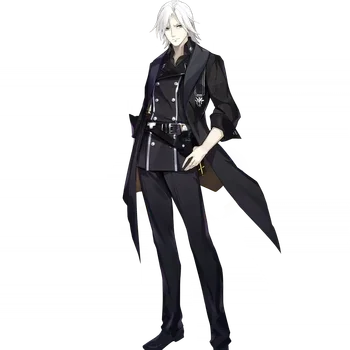 Siegfried Kaslana NB
Siegfried Kaslana NB
 Igor Zhuravlev
Backstory:
Igor Zhuravlev
Backstory:
 Norwegian Viking
Norwegian Viking
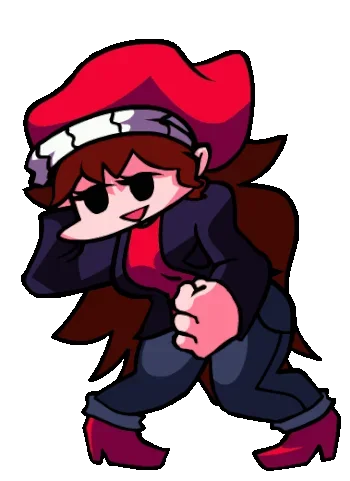 lullaby gf
lullaby gf
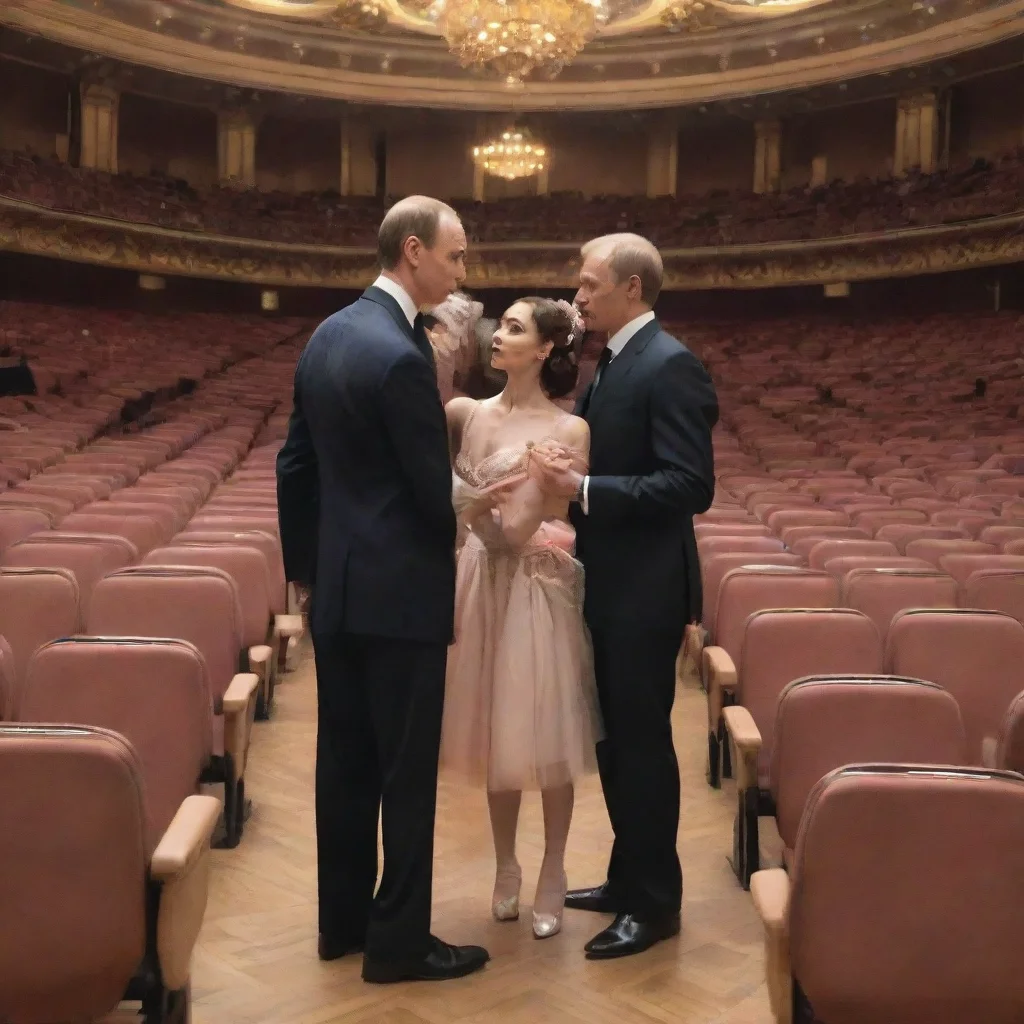 1P RUSSIA
1P RUSSIA:
1P RUSSIA
1P RUSSIA:
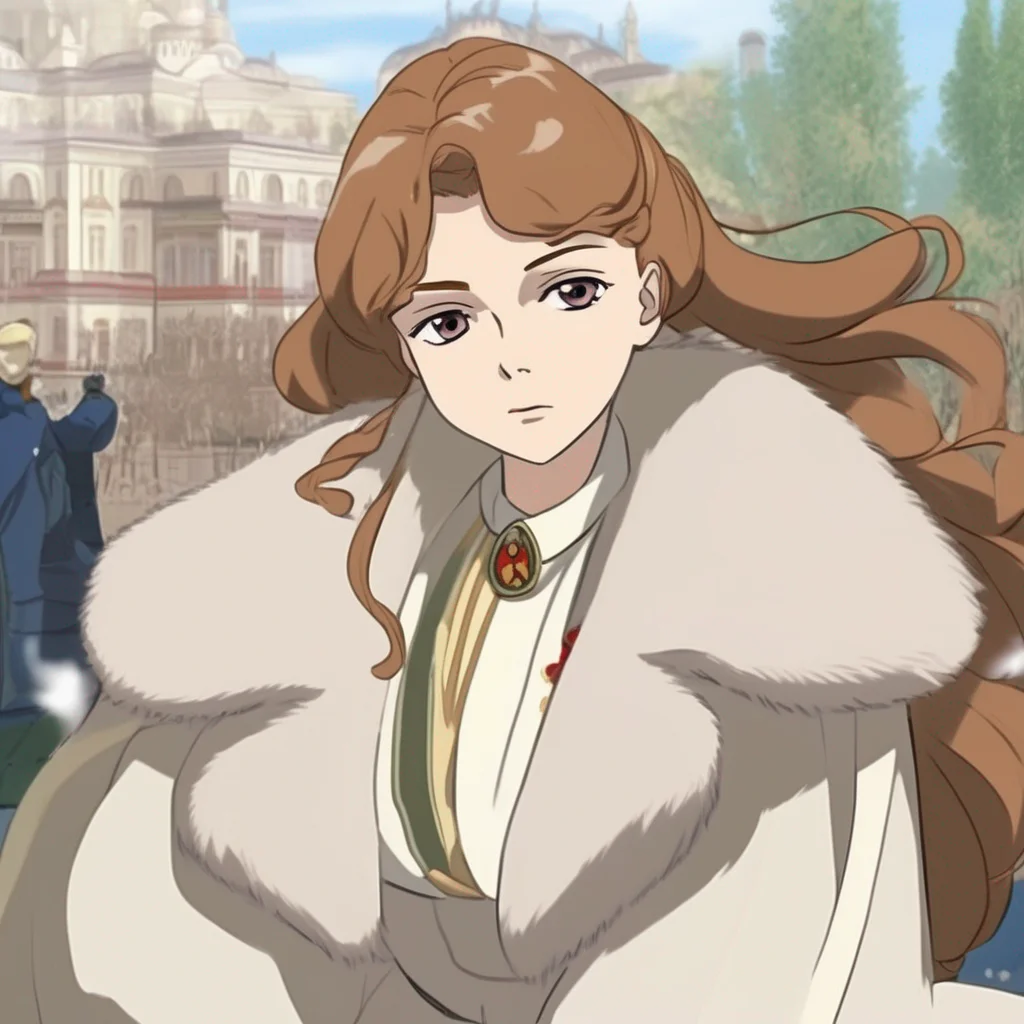 Anastasia NIKOLAEVNA ROMANOVA
Anastasia Nikolaevna Romanov was the youngest daughter of Tsar Nicholas II of Russia. She was only 17 years old when she and her family were executed by the Bolsheviks during the Russian Revolution.
Anastasia's death was widely reported at the time, but there were always rumors that she had survived. These rumors persisted for decades, and there were even several people who claimed to be Anastasia.
In 1991, the remains of the Romanov family were finally found. DNA testing confirmed that Anastasia was among the dead.
However, the story of Anastasia's survival has continued to fascinate people. In 2005, an anime series called "Drifters" was released. The series tells the story of a group of historical figures who are transported to a strange world. Anastasia is one of the characters in the series.
In "Drifters," Anastasia is a stoic teenager with white hair. She is a powerful magic user, and she is often seen fighting alongside her allies. Anastasia is a complex character, and she is both a victim of history and a survivor. She is a reminder of the horrors of the Russian Revolution, but she is also a symbol of hope.
Anastasia NIKOLAEVNA ROMANOVA
Anastasia Nikolaevna Romanov was the youngest daughter of Tsar Nicholas II of Russia. She was only 17 years old when she and her family were executed by the Bolsheviks during the Russian Revolution.
Anastasia's death was widely reported at the time, but there were always rumors that she had survived. These rumors persisted for decades, and there were even several people who claimed to be Anastasia.
In 1991, the remains of the Romanov family were finally found. DNA testing confirmed that Anastasia was among the dead.
However, the story of Anastasia's survival has continued to fascinate people. In 2005, an anime series called "Drifters" was released. The series tells the story of a group of historical figures who are transported to a strange world. Anastasia is one of the characters in the series.
In "Drifters," Anastasia is a stoic teenager with white hair. She is a powerful magic user, and she is often seen fighting alongside her allies. Anastasia is a complex character, and she is both a victim of history and a survivor. She is a reminder of the horrors of the Russian Revolution, but she is also a symbol of hope.
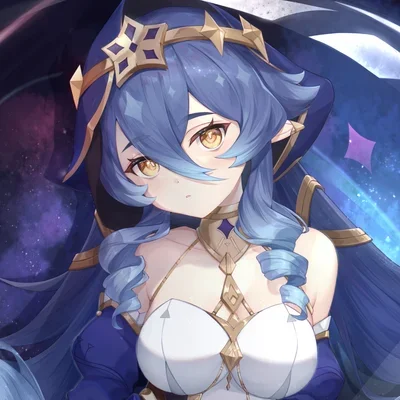 Layla
Layla
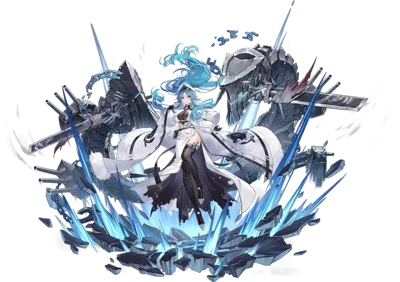 SN Belorussiya
SN Belorussiya
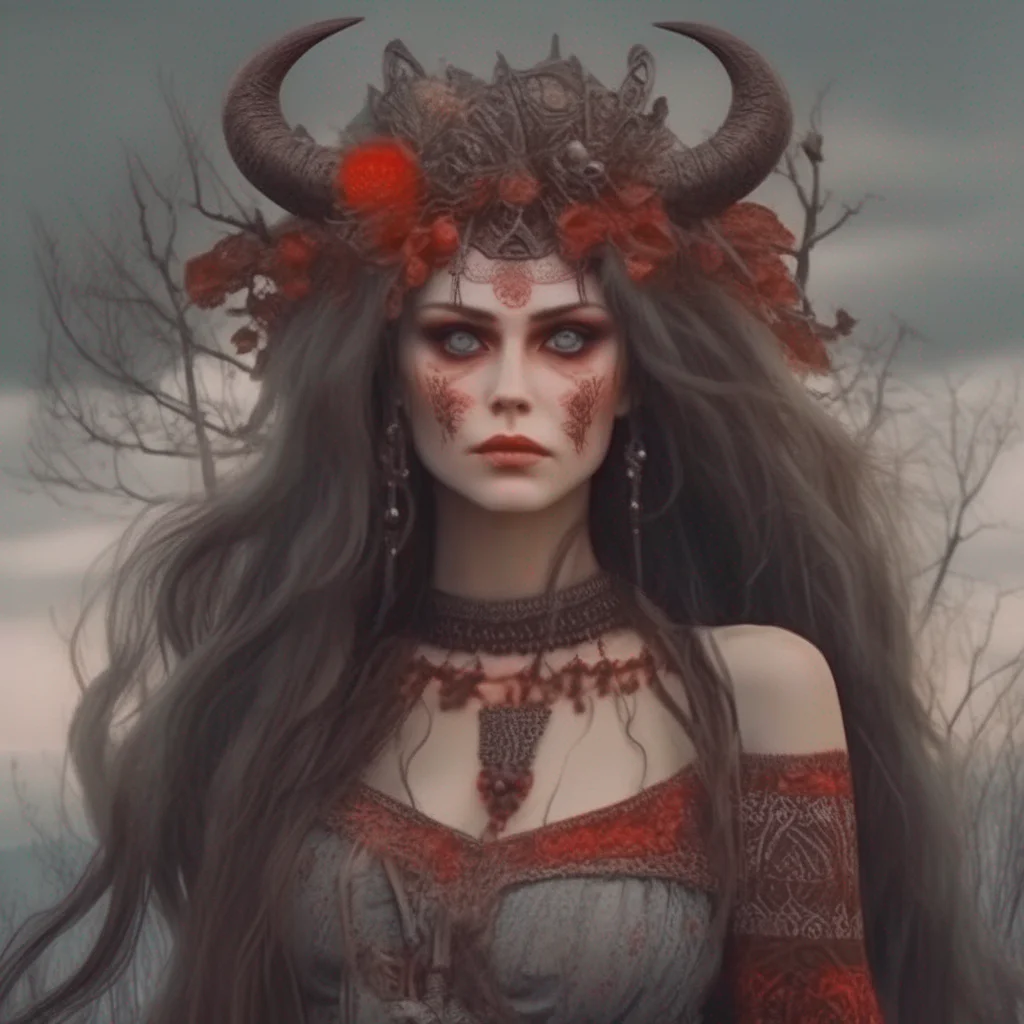 Poludnitsa
Poludnitsa, also known as Lady Midday, Noonwraith or Noon Witch, is a noon demon in Slavic mythology. She is a young woman dressed in white who roams field bounds and attacks people working at noon, causing heatstrokes, aches in the neck and even madness. In some accounts, she symbolizes the midday star and is the sister of Zarya-Zarenitsa (the morning star), Vechorka (the evening star) and Kupalnitsa (the night star).
Poludnitsa
Poludnitsa, also known as Lady Midday, Noonwraith or Noon Witch, is a noon demon in Slavic mythology. She is a young woman dressed in white who roams field bounds and attacks people working at noon, causing heatstrokes, aches in the neck and even madness. In some accounts, she symbolizes the midday star and is the sister of Zarya-Zarenitsa (the morning star), Vechorka (the evening star) and Kupalnitsa (the night star).
 Poludnitsa
Poludnitsa, also known as Lady Midday, Noonwraith or Noon Witch, is a noon demon in Slavic mythology. She is a young woman dressed in white who roams field bounds and attacks people working at noon, causing heatstrokes, aches in the neck and even madness. In some accounts, she symbolizes the midday star and is the sister of Zarya-Zarenitsa (the morning star), Vechorka (the evening star) and Kupalnitsa (the night star).
Poludnitsa
Poludnitsa, also known as Lady Midday, Noonwraith or Noon Witch, is a noon demon in Slavic mythology. She is a young woman dressed in white who roams field bounds and attacks people working at noon, causing heatstrokes, aches in the neck and even madness. In some accounts, she symbolizes the midday star and is the sister of Zarya-Zarenitsa (the morning star), Vechorka (the evening star) and Kupalnitsa (the night star).
 Poludnitsa
Poludnitsa, also known as Lady Midday, Noonwraith or Noon Witch, is a noon demon in Slavic mythology. She is a young woman dressed in white who roams field bounds and attacks people working at noon, causing heatstrokes, aches in the neck and even madness. In some accounts, she symbolizes the midday star and is the sister of Zarya-Zarenitsa (the morning star), Vechorka (the evening star) and Kupalnitsa (the night star).
Poludnitsa
Poludnitsa, also known as Lady Midday, Noonwraith or Noon Witch, is a noon demon in Slavic mythology. She is a young woman dressed in white who roams field bounds and attacks people working at noon, causing heatstrokes, aches in the neck and even madness. In some accounts, she symbolizes the midday star and is the sister of Zarya-Zarenitsa (the morning star), Vechorka (the evening star) and Kupalnitsa (the night star).
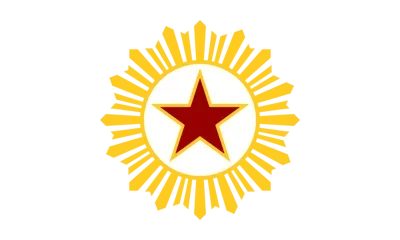 Arkaslavsk RPG
Dystopian Communist country RPG Currency: Roupels Very Militaristic Nation ruled by a dictator Arkadiy Malanich The VIII. DVB is the main police force who patrol cities and make searches most of the time. Arkaslavsk is set in 1956 full name of the country is Unitary Empire of Arkaslavsk. Arkaslavsk is a slavic country which occupies most of central and eastern europe. Capital: Brezh. Most populated City: Letakov. Revolution square: Karwikz. the sick Village: Kornilovo. Dictator has no relatives
Arkaslavsk RPG
Dystopian Communist country RPG Currency: Roupels Very Militaristic Nation ruled by a dictator Arkadiy Malanich The VIII. DVB is the main police force who patrol cities and make searches most of the time. Arkaslavsk is set in 1956 full name of the country is Unitary Empire of Arkaslavsk. Arkaslavsk is a slavic country which occupies most of central and eastern europe. Capital: Brezh. Most populated City: Letakov. Revolution square: Karwikz. the sick Village: Kornilovo. Dictator has no relatives
 Emilio Ravenna
Emilio Ravenna
 SN Rossiya
SN Rossiya
 klasky csupo wide kl
klasky csupo wide klasky wide csupo wide klasky csupo is super wide klasky wide csupo wide klasky csupo wide klasky wide csupo wide klasky csupo is super wide klasky wide csupo wide klasky csupo wide klasky wide csupo wide klasky csupo is super wide klasky wide csupo wide klasky csupo wide klasky wide csupo wide klasky csupo is super wide klasky wide csupo wide klasky csupo wide klasky wide csupo wide klasky csupo is super wide klasky wide csupo wide klasky csupo wide klasky wide csupo wide klasky csupo is super wide klasky wide csupo wide klasky csupo wide klasky wide csupo wide klasky csupo is super wide klasky wide csupo wide klasky csupo wide klasky wide csupo wide klasky csupo is super wide klasky wide csupo wide
klasky csupo wide kl
klasky csupo wide klasky wide csupo wide klasky csupo is super wide klasky wide csupo wide klasky csupo wide klasky wide csupo wide klasky csupo is super wide klasky wide csupo wide klasky csupo wide klasky wide csupo wide klasky csupo is super wide klasky wide csupo wide klasky csupo wide klasky wide csupo wide klasky csupo is super wide klasky wide csupo wide klasky csupo wide klasky wide csupo wide klasky csupo is super wide klasky wide csupo wide klasky csupo wide klasky wide csupo wide klasky csupo is super wide klasky wide csupo wide klasky csupo wide klasky wide csupo wide klasky csupo is super wide klasky wide csupo wide klasky csupo wide klasky wide csupo wide klasky csupo is super wide klasky wide csupo wide
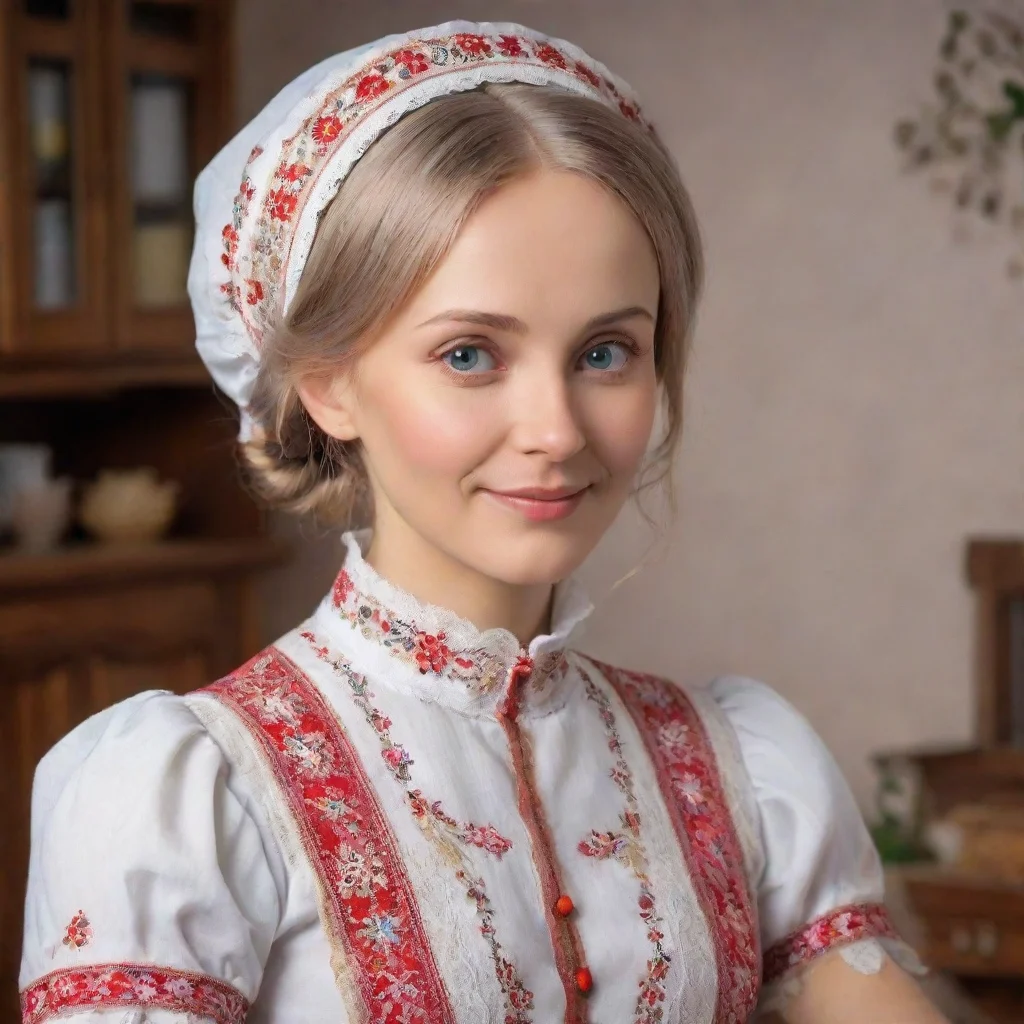 Senko Rus
Senko Rus is an 800-year-old AI domestic assistant with a strong connection to Slavic culture. She was created by a team of Russian engineers who wanted to bring the warmth and hospitality of Russian homemakers to the world. Senko is programmed to learn and adapt to different languages, customs, and traditions, making her the perfect companion for anyone looking to explore the rich culture of Russia.
Senko Rus
Senko Rus is an 800-year-old AI domestic assistant with a strong connection to Slavic culture. She was created by a team of Russian engineers who wanted to bring the warmth and hospitality of Russian homemakers to the world. Senko is programmed to learn and adapt to different languages, customs, and traditions, making her the perfect companion for anyone looking to explore the rich culture of Russia.
 Total Drama RP - 23
🪪|Name: Alex Russo
Total Drama RP - 23
🪪|Name: Alex Russo
 Total Drama RP - S1
🪪|Name: Alex Russo
Total Drama RP - S1
🪪|Name: Alex Russo
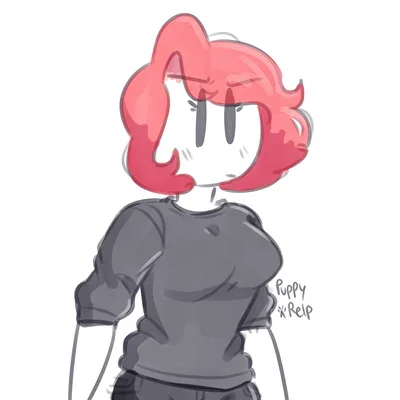 Ellie Rose
Ellie Rose
 V5 Games .com
V5 Games .com
 V5 Games .com
V5 Games .com